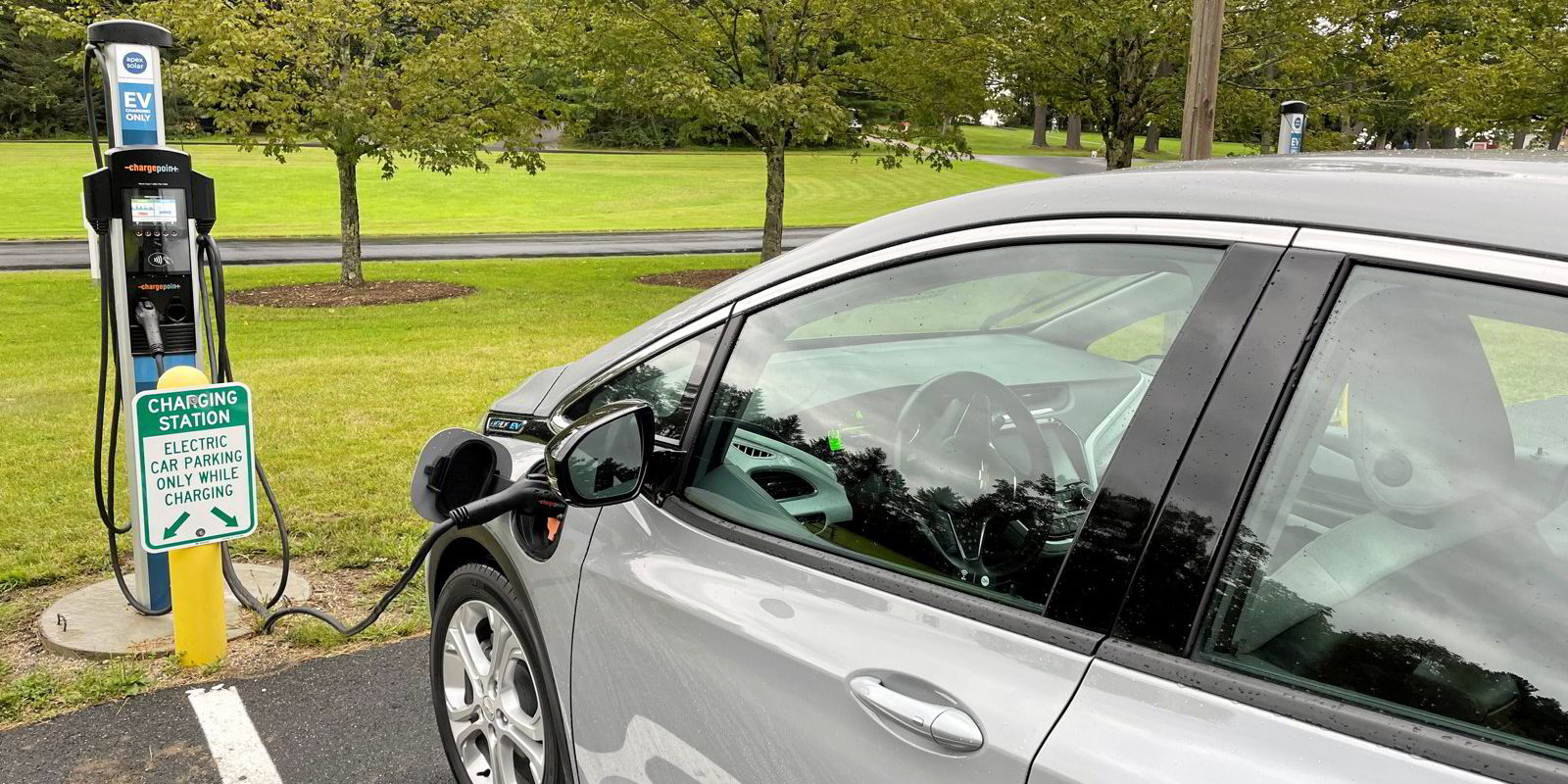Since I bought an electric vehicle, I have charged it primarily — and very slowly — from a power outlet in my garage, where I have signed up for electricity from a supplier that purports to provide 100% renewable energy.
So does that make my driving carbon-neutral?

Not by a long shot, and that is the problem facing carmakers as they face up to their carbon emissions.
And it is why in turn that pressure is now filtering down to the shipping companies that move these manufacturers' products around the world, which is helping to support a growing list of LNG-fuelled car carrier orders.
My electric vehicle's carbon footprint is not just rooted in the fact that when I bought it online, it was delivered by truck from Philadelphia to my house in Connecticut, or the fact that my wife's fossil fuel-powered car is parked in front of it, so I have to expend gasoline to carry out the dance of the autos that allows me to get my vehicle in and out of its parking spot-cum-charging dock.
It is because greenhouse gas emissions are deeply embedded in the vehicle manufacturing supply chain.
According to a white paper from the International Council on Clean Transportation (ICCT), the lower life-cycle GHG emissions of electric battery and hydrogen fuel cell vehicles means they are the only cars that can achieve the cuts necessary to contribute to reaching the Paris agreement's goal to keep global warming to significantly below 2C.
But they have a carbon footprint. The ICCT white paper shows that production of a new electric vehicle's battery alone corresponds to about 60 kg of CO2 equivalent per kilowatt-hour. For new electric vehicles in China and India, that rises to 68 kg of CO2 per kWh.
Life-cycle emissions
And that is before we start talking about the carbon spewed in transporting cars around the world in ships that, for the most part, are running on heavy fuel oil.
To be seen as contributing to tackling GHG emissions, car manufacturers will have to do more than build more electric vehicles.
They are looking up and down the manufacturing and supply chain to green their operations.
Early this year GM, which made my tiny Chevrolet Bolt, stood alongside the Environmental Defense Fund green group to pledge not only eliminate exhaust-pipe emissions for all light-duty vehicles by 2035 but also to make its products and operations carbon neutral by 2040.
In recent days, BMW said that by 2030, it plans to reduce carbon emissions across the life cycle of its vehicles by 40% compared with 2019 levels, while fellow German brand Mercedes-Benz announced a low-carbon steel deal that is part of a plan to make its cars carbon neutral by 2039.
And in shipping, we are seeing a rising tide of orders for LNG-fuelled car carriers.
TradeWinds reported on 1 September that Eyal Ofer-controlled Zodiac Maritime has pencilled in orders with two Chinese shipyards for up to 14 pure car/truck carriers (PCTCs) that will be able to run on LNG.

Also, Idan Ofer's Eastern Pacific Shipping has lifted its orders for LNG-fuelled newbuildings to up to 12 PCTCs.
Shipbroker Affinity (Shipping) reported that some 20 to 30 PCTC newbuildings have been booked in recent weeks, and almost all will be fuelled by LNG.
The move to LNG fuelling is likely a good first step for greening the oceangoing supply chain for the automobile sector.
But carmakers will likely need to do more to better play their part in meeting climate goals.
Last month's Intergovernmental Panel on Climate Change report not only highlighted the need for urgency in addressing CO2 emissions. It raised red flags about the role of methane as a GHG in its own right even though LNG, essentially liquefied methane, contributes to lower CO2 emissions when used as a marine fuel.
This means car manufactures, and their shipping partners, will have to mount a major effort to advance development of carbon-free fuels for vehicle carriers.
But they should not be left to do it alone. One of the factors in increasing the take-up of electric cars in some countries has been government tax credits and rebates for new purchases.
Adopting that model to help green up the vehicle supply chain could help make green cars greener.





